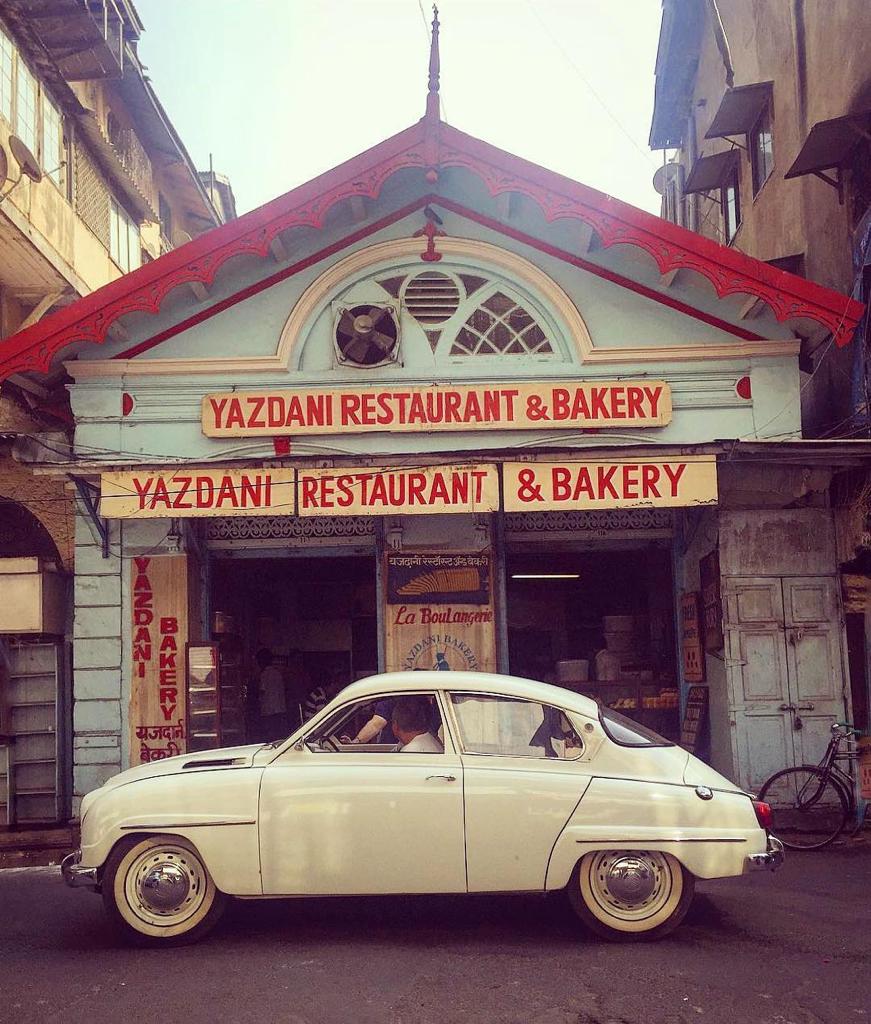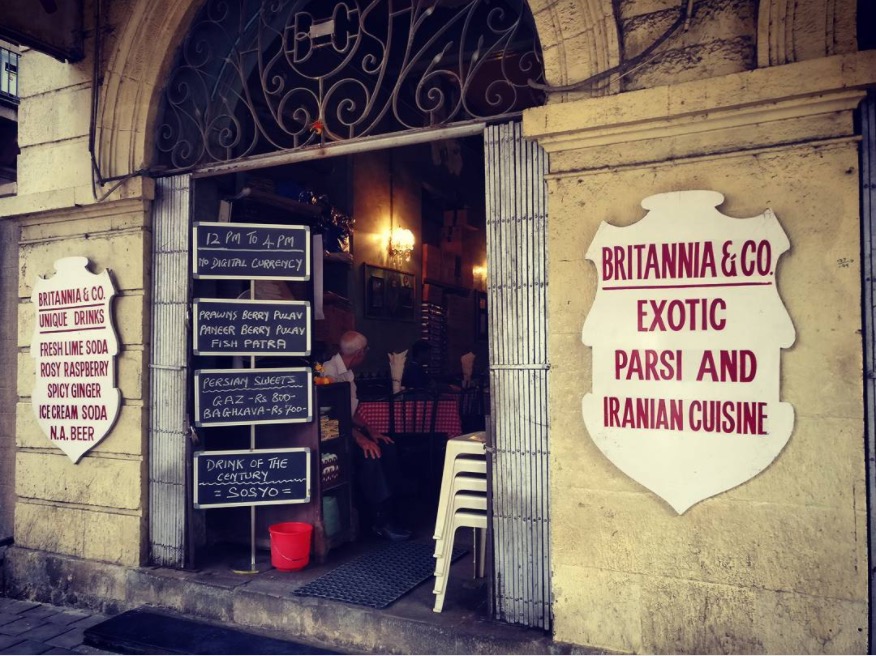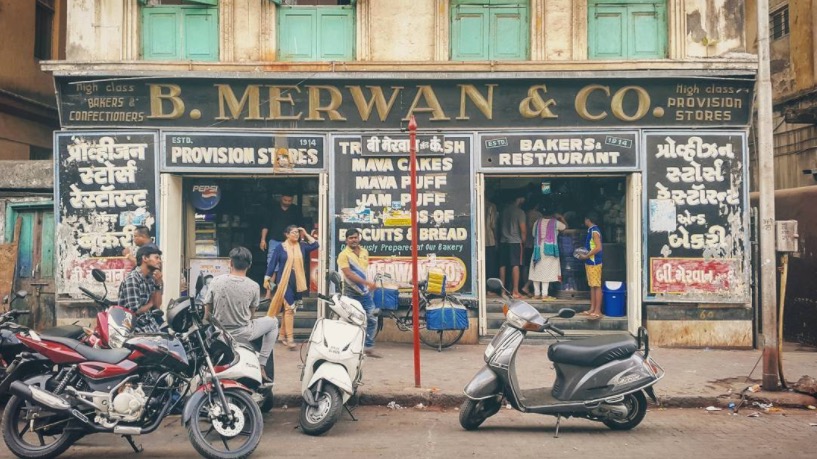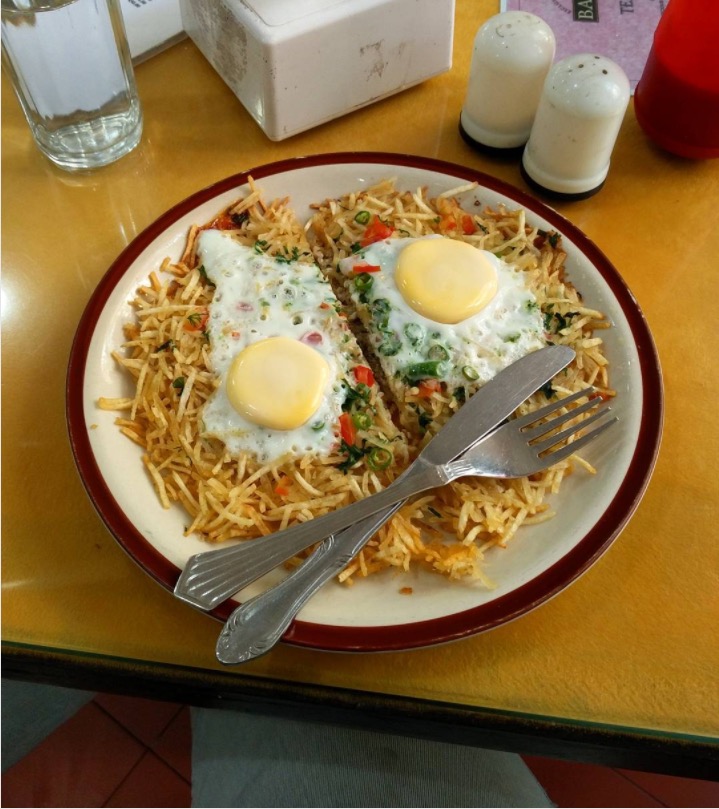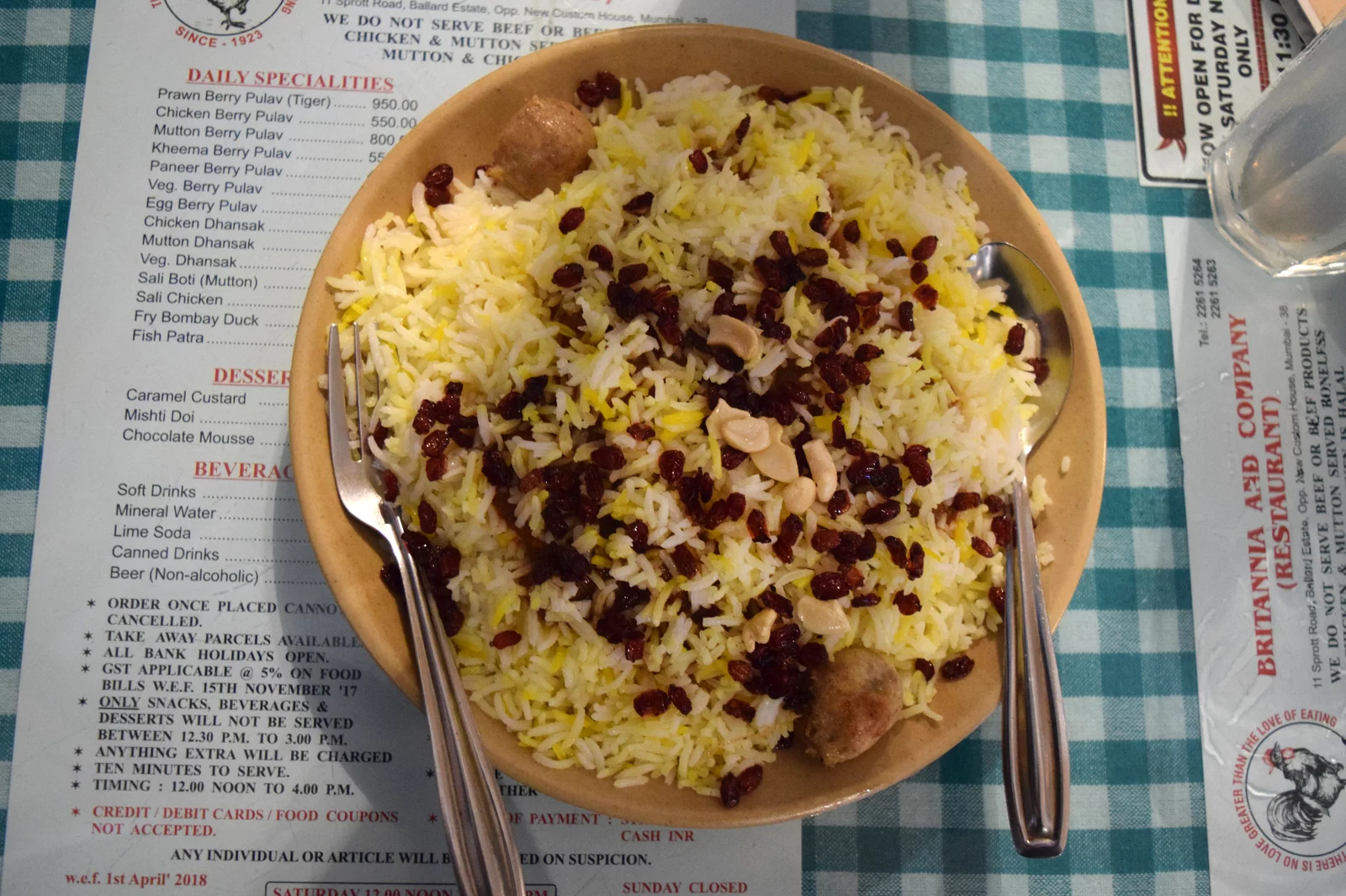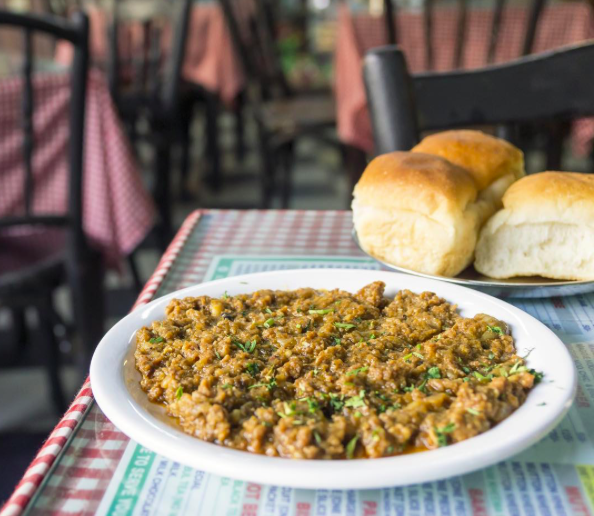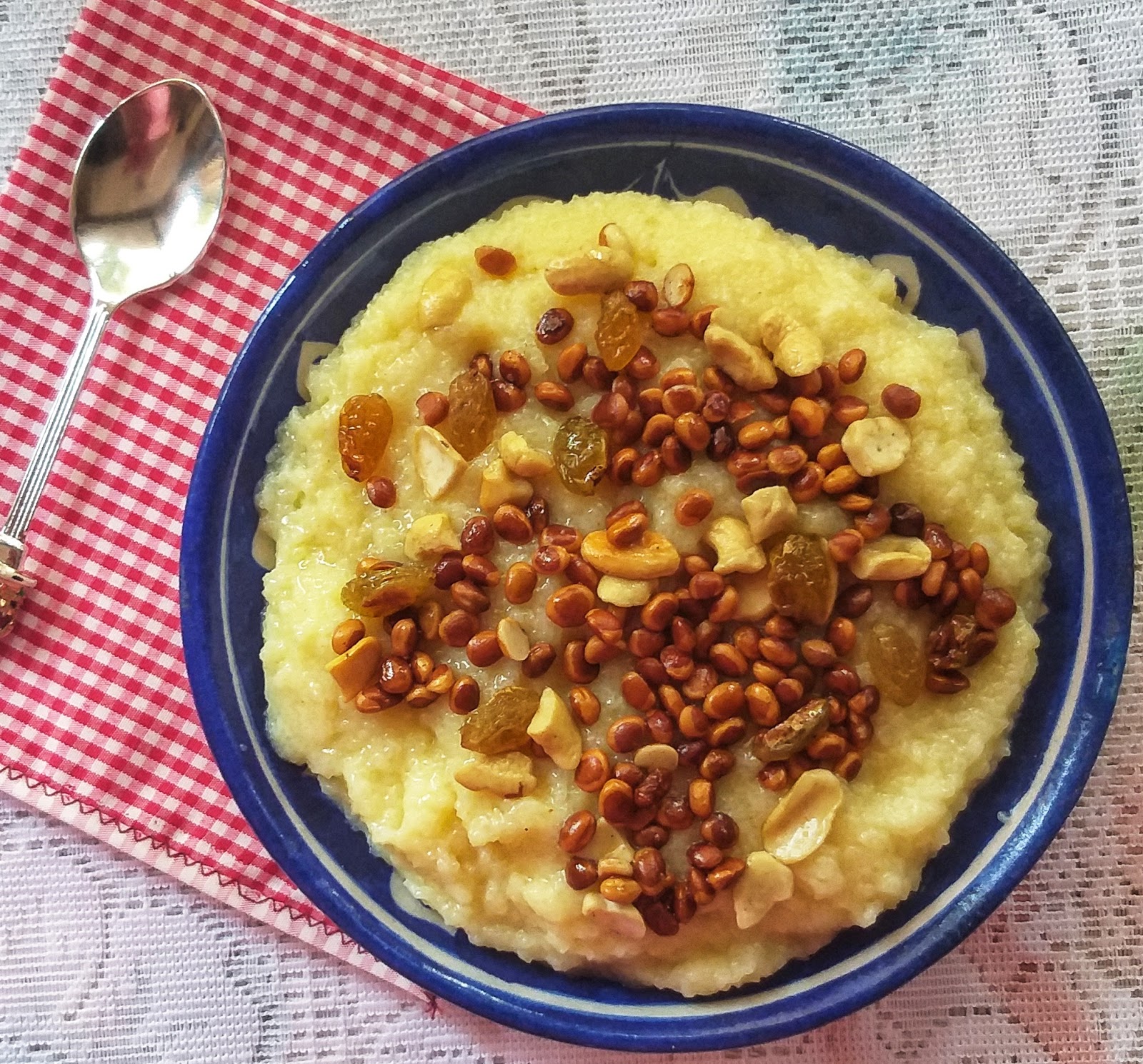To accurately dissect and unravel the mysteries of Parsi cooking, it would only do justice to delve into the complex origins of this beloved cuisine, and its people. Around the 8th to 10th century, Zoroastrians living in Persia (modern-day Iran) were forced to migrate to India, due to severe religious persecution. It was around then that these Persian Zoroastrians set sail and landed in Diu, in Kathiawar, and then settled in Gujarat, and following the arrival of the East India Company, the Persian Zoroastrians, now known as Parsis, began to settle in Bombay as well. Here, we already see the possible contribution of three major cultural influences—Persian, Indian, and British— that finally culminated in the flavours of Parsi cooking, as we know it.
Left: Britannia & Co. Right: B. Merwan & Co. some of the oldest Irani cafes in Mumbai.
Whilst residing in Persia, the Zoroastrians primarily prepared stews and meats, with a lot of their food being garnished with dry fruits and nuts. A classic example would be Parsi dishes like Jardaloo Salli Boti, a unique recipe that pairs the tangy sweetness of dried apricots with cubed mutton or lamb, marinated in a gravy bursting with strong flavours of cider vinegar and freshly ground Indian spices. Fried shoestring potato, or Salli, is used in a variety of Parsi dishes, right from garnishes on stews, to a base for eggs in Salli par Eedu.
Salli par Eedu at Jimmy Boy, a Parsi cafe in Mumbai that has been around since the 1920s.
Upon landing on the Western coast of India, the Parsis began incorporating local seafood and coconut into their recipes. Thus was born the classic Parsi coconut curry, a brown gravy with mutton cubes, thickened with the signature flavour of coconut. It differs from the original Malvani curries in texture and consistency, and uses tamarind instead of kokum to lend a tangy sourness. “In Iran, the most popular fish comes from the Caspian Sea which is a landlocked sea with low salinity,” explains food historian Kurush Dalal. Parsis introduced saltwater fish like pomfret, coconut leaves, limes, and chutneys to create patra ni macchi, steamed fish covered in green chutney. Parsi cuisine branched off and truly took shape during the British Rule, with many Caucasian influences becoming apparent in innovations such as lagan nu custard, a spin-off on the English custard dessert, with the addition of dried fruits.
Saas ni macchi borrows the concept of a European bechamel sauce to create a white sauce-like base for this pomfret dish, using simple ingredients such as cornflour, egg, and vinegar. Today, berry pulao, kheema pao, and bhurji pao are only a few of the countless dishes that the people of India have grown to love. Quaint Irani cafés with their red chequered tablecloths and the aroma of Irani chai and freshly buttered bun maska are haunts where time truly stands still.
Left: Chicken Berry Pulao at Britannia & Co. ; Right: Kheema Pao at Koolar & Co.
The story of my introduction to Parsi cooking was a little different. My Parsi mother grew up in a paradoxically vegetarian household—a combination so seemingly absurd, for a community whose cooking revolves primarily around meat. However, this strange combination of a vegetarian Parsi family helped me to understand the true flavours of Parsi cooking, preserved in the traditional recipes that my Mamaiji (Parsi term for maternal grandmother) tried to make vegetarian once she stopped eating meat as a young woman. Every dish prepared in my household had its roots in the traditional style of Parsi cuisine; with vegetarian substitutes for fish and meat, the gravies, masalas, and overall Parsi method of cooking has been passed down from my Persian ancestors, through the generations.
Traditional festive sweet dish of Ravo.
Like any traditional Parsi household, I’ve grown up seeing a kitchen always stocked with typical old-fashioned glass jars of raisins, apricots, cashews, and charoli. These dried fruits are often toasted with fragrant ghee (clarified butter) and mixed into vegetable stews, folded into rice dishes like pulaos, or crumbled onto ravo, a sweet dish made with milk and semolina to celebrate festive occasions. This dish is a perfect example of one that pays homage to its Persian roots and Gujarati influence, where sweet, sour and spice work in perfect harmony to create one of the most comforting dishes ever. Bafenu, an exceedingly unique authentic Parsi pickle, packs a strong punch as it weaves an elegant path between tangy, sweet, and spicy—three flavours that often recur in this cuisine. This recipe uses the soft sweetness of ripened mangoes mixed with the sourness of vinegar to create a powerful medley that activates the taste buds.
As the story goes, when the Persian Zoroastrians alighted in Gujarat, it is believed that the king of Gujarat gave them refuge upon one condition: that they meld into the local culture like a spoonful of sugar in a cup of milk. And rightly so, this beautiful culture blended right in, bringing a tinge of a much desired and long-lasting sweetness to its surroundings.
Words by Gayatri Thakkar.
Images via Messy Nessy Chic and NPR.
